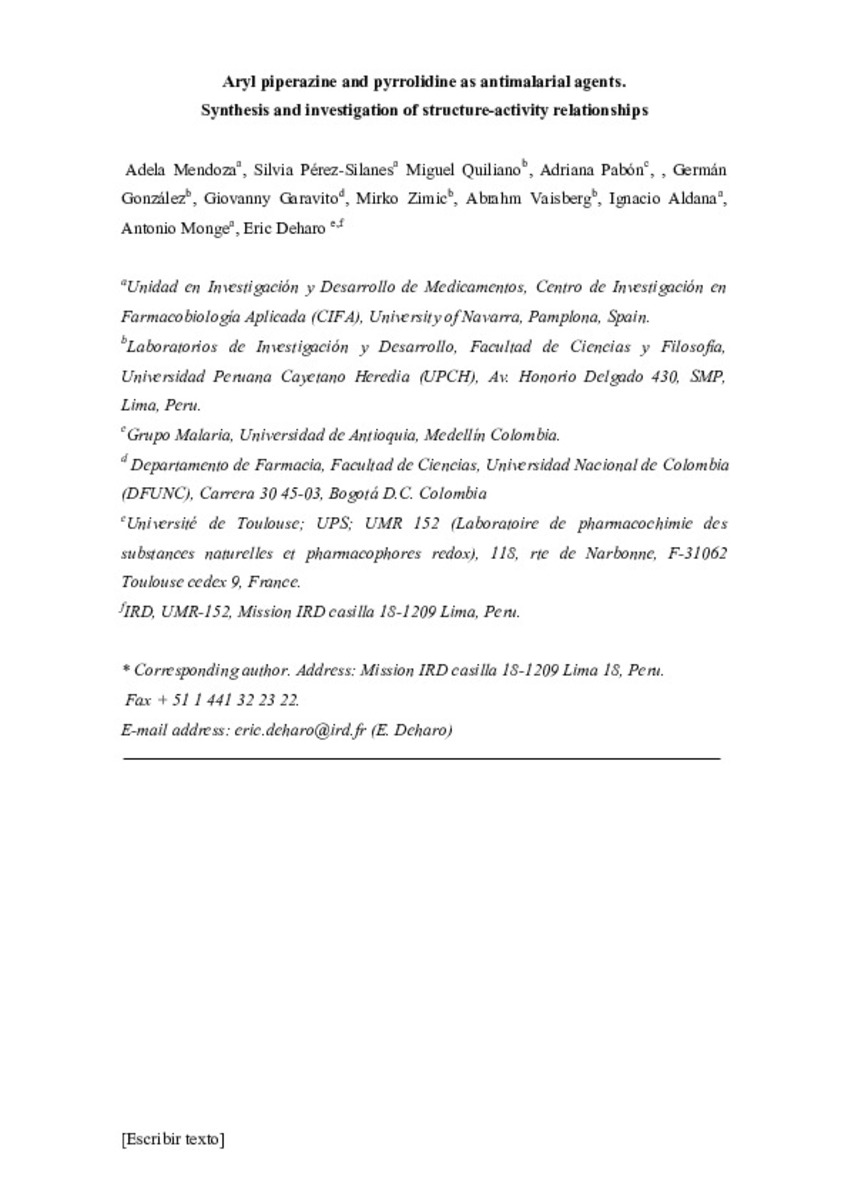Aryl piperazine and pyrrolidine as antimalarial agents. Synthesis and investigation of structure-activity relationships
Palabras clave :
Piperazine
Pyrrolidine
Antiplasmodial
Plasmodium
Antimalarial agents
Docking studies
Fecha de publicación :
2011
Cita:
Mendoza A, Perez-Silanes S, Quiliano M, Pabon A, Galiano S, Gonzalez G, et al. Aryl piperazine and pyrrolidine as antimalarial agents. Synthesis and investigation of structure-activity relationships. Exp Parasitol 2011 Jun;128(2):97-103.
Aparece en las colecciones:
Estadísticas e impacto
0 citas en

0 citas en

Los ítems de Dadun están protegidos por copyright, con todos los derechos reservados, a menos que se indique lo contrario.









